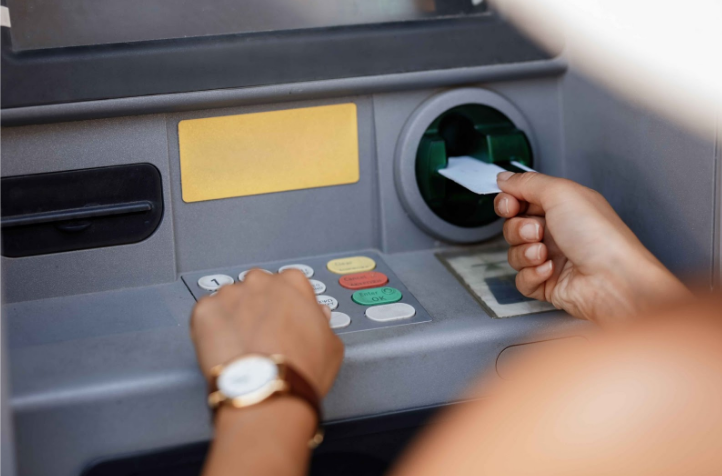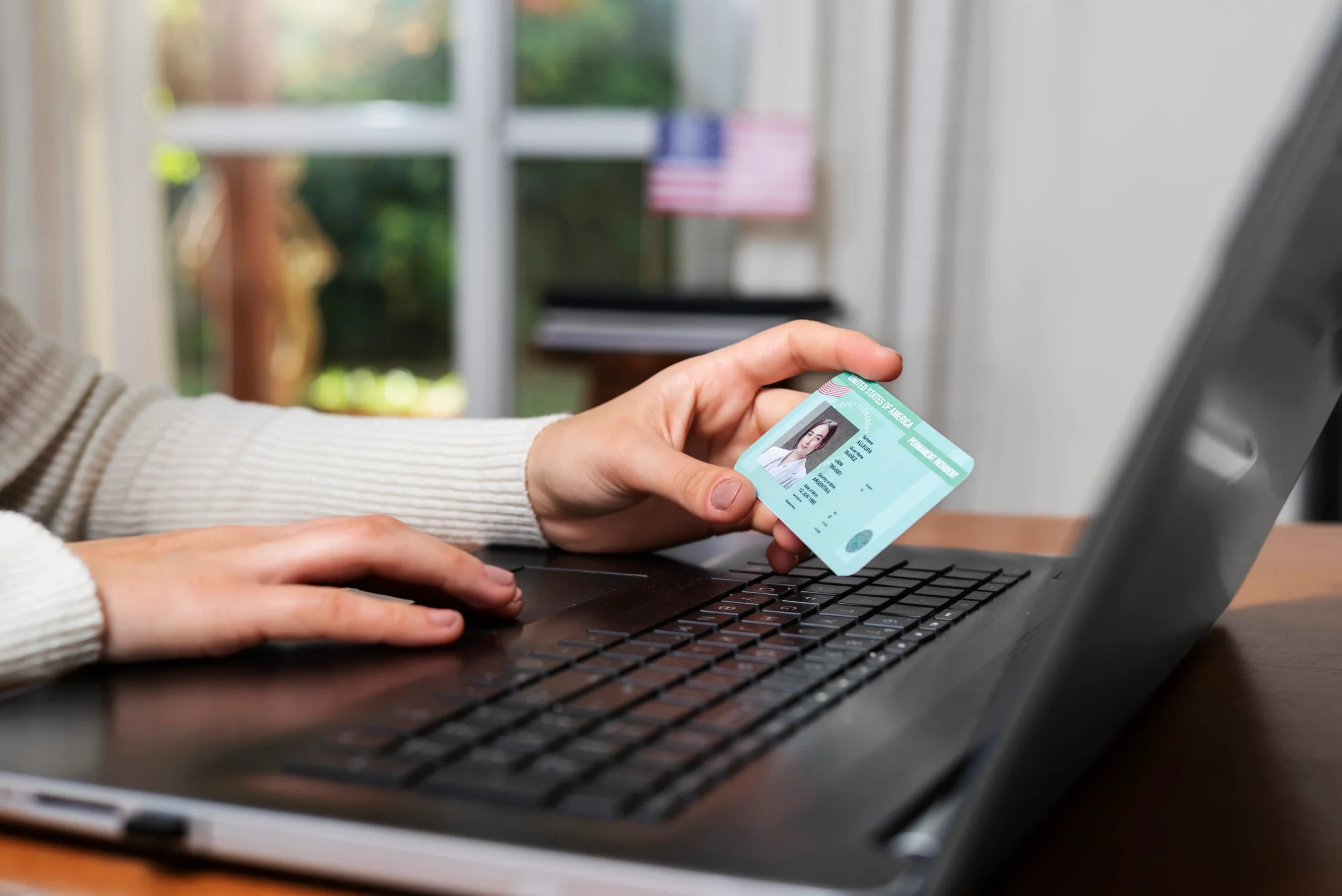The popular use of payment cards for transactions has opened the door to new forms of fraud: credit card skimming. In fact, according to The Business Research Company, the global payment card skimming market has surged from $3.16 billion in 2023 to $3.56 billion in 2024, with a growth rate of 12.4%.
In this type of credit card fraud, criminals use skimmers to secretly steal card information, leaving users unsure of the theft until it’s too late. This post will answer the question, “What is a skimmer?” and explain how these devices work, along with prevention tips to avoid skimming fraud and a recent case that shows its impact.
Need support after a scam? Join our community today.
What is a Skimmer?
A skimmer is a secret device used by fraudsters to steal card information. It is designed to look like part of an ATM or payment terminal and reads data from a card’s magnetic strip or chip while capturing PIN codes. This stolen data is then replicated to create fake cards, allowing unauthorized ATM cash withdrawals and other fraudulent transactions.
Learn how credit card fraud detection techniques work to help you avoid becoming a victim of this type of fraud.
Types of Skimming Devices That Steal Your Card Information
Knowing the different types of skimming devices helps you spot threats and keep your financial information safe. Here are some of the most common types of skimming devices to watch out for:
1. Overlay Skimmers
These are plastic attachments placed over legitimate card readers. Overlay skimmers replicate the original reader while secretly capturing card data from the magnetic strip. Commonly found on ATMs and gas pumps, they are easy to install and remove, making them a popular tool for quick skimming operations.
2. Deep-Insert Skimmers
These devices are hidden inside card readers, making them nearly impossible to detect externally. Criminals access the internal components of ATMs or gas pumps to install them. While deep-insert skimmers work discreetly for long periods, advanced fraud detection techniques can help identify and prevent their impact.
3. Wiretap Skimmers
These devices connect to the wiring of a card reader, intercepting card data as it passes through the machine. Wiretap skimmers are frequently installed on point-of-sale (POS) systems, especially in retail stores. Their hidden placement within internal cables makes them hard to detect without a thorough inspection.
4. Shimmers
Shimmers are ultra-thin devices inserted directly into a card reader slot. Unlike traditional skimmers, they target magnetic strip and chip data, making them a threat even to modern card technologies. These devices are commonly used at ATMs and payment terminals that accept chip-enabled cards.
5. Pinhole Cameras
Often used with other skimming devices, pinhole cameras are strategically placed near ATMs or fuel pumps to record customers entering their PIN. These tiny cameras, often hidden in panels or light fixtures, capture PINs to let criminals withdraw funds or make unauthorized purchases.
Have questions about dealing with scams? Contact us for support.
Six Accused in St. Louis ATM Skimming Fraud Case
Authorities have charged six individuals in St. Louis with using skimming devices to steal bank account information and PINs from customers. The group allegedly targeted ATMs in multiple locations, cloning cards and attempting unauthorized withdrawals.
How Did the Skimmers Work?
The accused used skimming devices to secretly collect sensitive card data. Their activities included:
- Installing skimmers on ATMs at banks in Frontenac, Clayton, and other St. Louis locations.
- Cloning cards to replicate account information.
- Attempting withdrawals using the stolen data.
- Collecting PINs through devices hidden on ATMs.
What Were the Legal Consequences?
The group faces charges for:
- Conspiracy to commit bank fraud.
- Access device fraud.
- Aggravated identity theft.
Some members have appeared in court and pleaded not guilty, while others are awaiting trial or remain at large. The case also involves immigration-related challenges, as some individuals are in the U.S. illegally or have overstayed their visas.
Discover the 8 most common examples of fraud in digital wallets that should be avoided to keep your money safe.
How to Protect Yourself from Skimming in 7 Steps
Here are seven practical tips to help you detect and avoid skimming attempts at ATMs, fuel pumps, and point-of-sale terminals:
1. Inspect the Machine Before Use
Take a moment to look at the machine before inserting your card. Check for loose parts, misaligned colors, or broken components. If there are multiple machines nearby, compare them. For example, one card slot flashing differently from the others might be a sign of tampering. If anything looks suspicious, it’s best to use a different machine.
2. Protect Your PIN
Always cover the keypad with one hand while typing your PIN to block hidden cameras. Pay attention to how the keypad feels—if it’s loose, hard to press, or moves when you touch it, it could be a fake overlay placed by scammers to capture your PIN.
3. Choose Safe Locations
Stick to ATMs in public, well-lit areas, or inside banks with security cameras. Avoid using machines in bars, small shops, or remote spots, as these are common targets for skimming. Indoor ATMs are usually more secure and less likely to be tampered with.
4. Use Secure Payment Methods
Mobile wallets like Apple Pay or Google Pay add an extra layer of protection by encrypting your payment information. At gas stations, try tap-to-pay options or pay directly with the cashier if the pump seems suspicious.
5. Monitor Your Accounts Regularly
Keep an eye on your bank, credit, or benefit accounts, often through mobile or online banking. Don’t wait for monthly statements to notice anything unusual. Set up alerts to get real-time notifications for transactions that look out of place.
6. Beware of Fraudulent Requests
Be cautious if you receive calls, texts, or emails asking for your PIN or card details. Scammers might pretend to be from your bank or another trusted organization. Always double-check these requests directly with your bank before sharing any sensitive information.
Learn more about what is fraud by false representation with examples that best define this type of fraud.
7. Trust Your Instincts
If a machine looks damaged, altered, or in a questionable location, it’s better to find another one. Sometimes switching to a different terminal or payment method can make all the difference in avoiding fraud.
Stay Safe from Skimmers with CDN
Now that you know what a skimmer is and how it works, it’s clear this crime has serious financial consequences. According to the FBI, financial institutions and consumers lose over a billion dollars each year to skimming. In 2023, the data analytics firm FICO reported a 96% rise in compromised debit cards, showing just how much this type of fraud is growing.
At Cryptoscam Defense Network (CDN), we help people protect themselves from fraud by sharing simple tips and effective prevention strategies. If you’ve been affected by fraud, you’re not alone. Join our community to share your story, connect with others, and receive the help you need to recover and secure your financial information.
We Want to Hear From You!
Fraud recovery is hard, but you don’t have to do it alone. Our community is here to help you share, learn, and protect yourself from future frauds.
Why Join Us?
- Community support: Share your experiences with people who understand.
- Useful resources: Learn from our tools and guides to prevent fraud.
- Safe space: A welcoming place to share your story and receive support.
Find the help you need. Join our Facebook group or contact us directly.
Be a part of the change. Your story matters.
Frequently Asked Questions (FAQs) About Skimmer Devices
Where are Skimming Devices Commonly Found?
Skimming devices are often found on ATMs, fuel pumps, and POS terminals, especially in high-traffic areas like tourist spots or locations with minimal security, such as small shops or remote ATMs. Fraudsters target these machines because they are easy to tamper with and have frequent use.
How Can I Detect a Skimming Device?
You can detect skimming devices by inspecting the card reader and keypad for loose, crooked, or mismatched components. Look for unusual materials, scratches, or color mistakes. If the terminal looks altered, avoid using it and choose another machine.
What Should I Do if I Suspect My Card Was Skimmed?
If you suspect your card was skimmed, immediately contact your bank to report unauthorized transactions. Change your PIN and, if possible, freeze your account to prevent further access. Regularly monitor your account reports for suspicious activity.
What Steps Can I Take to Prevent Skimming?
To prevent skimming:
- Cover the keypad when entering your PIN.
- Avoid ATMs in poorly lit or unmonitored areas.
- Use secure payment methods like mobile wallets or tap-to-pay options.
- Check your accounts frequently for unauthorized transactions and enable alerts for unusual activity.
Photos via Freepik.







